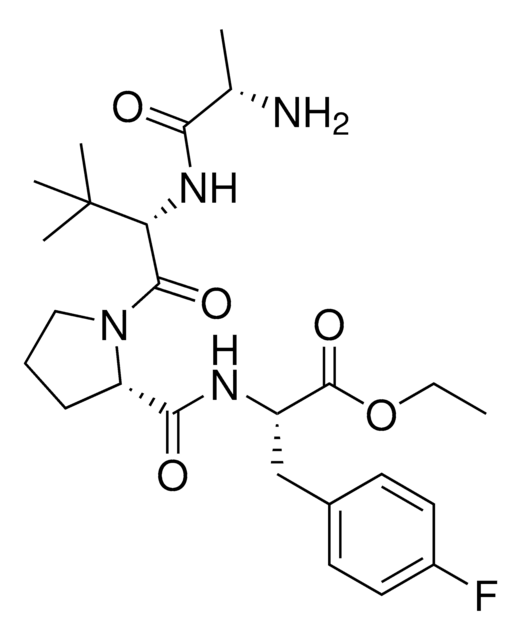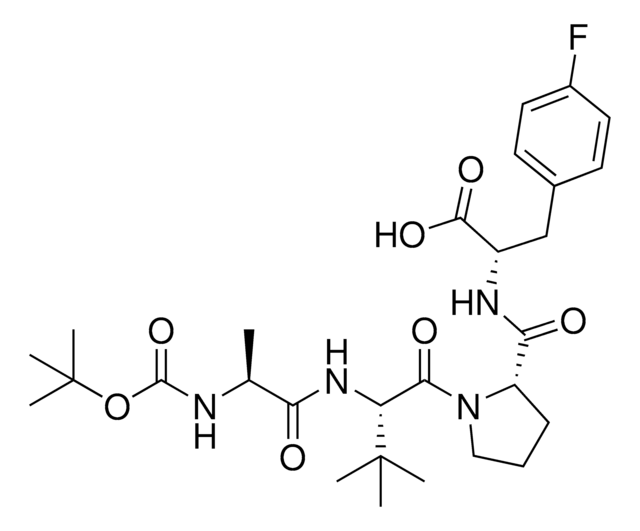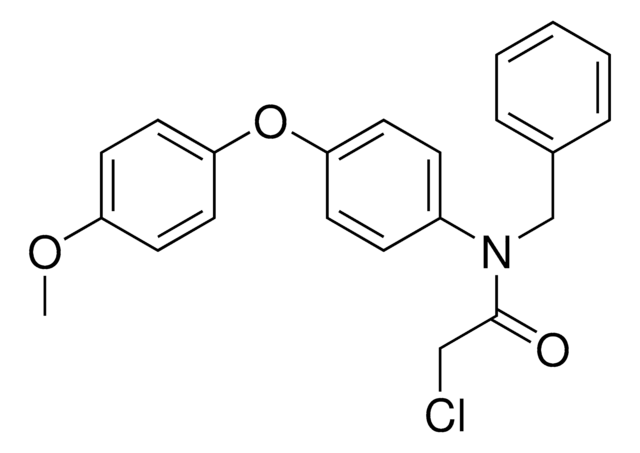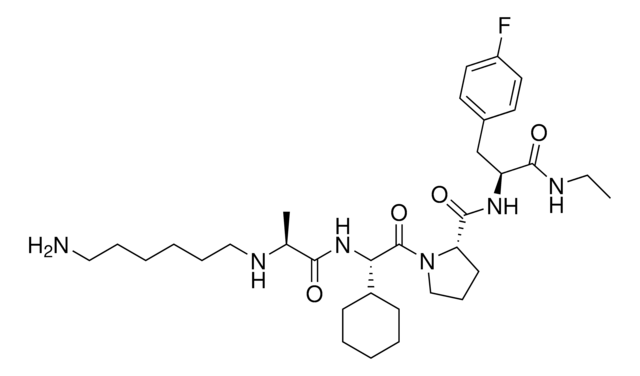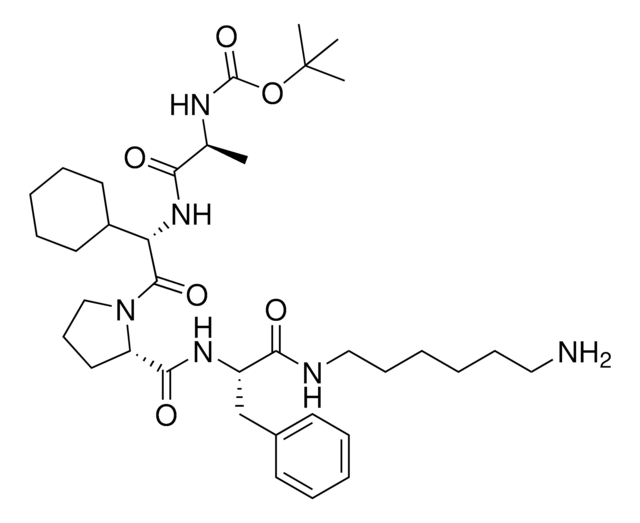917222
A1V2PF1-NHEt
≥95%
Synonym(s):
(S)-1-((S)-2-((S)-2-Aminopropanamido)-2-cyclohexylacetyl)-N-((S)-1-(ethylamino)-1-oxo-3-phenylpropan-2-yl)pyrrolidine-2-carboxamide, AVP ligand, IAP E3 ligase lead for protein degrader research, SNIPER building block
About This Item
Recommended Products
ligand
A1V2PF1
Quality Level
assay
≥95%
form
powder
reaction suitability
reagent type: ligand
functional group
amine
storage temp.
2-8°C
SMILES string
N[C@H](C(N[C@H](C(N1CCC[C@H]1C(N[C@H](C(NCC)=O)CC2=CC=CC=C2)=O)=O)C3CCCCC3)=O)C
Related Categories
Application
A1V2PF1-NHEt conjugates are also available for degrader synthesis. Browse our full synthesis offering here for streamlining SNIPER and PROTAC® degrader libraries: Degrader Building Blocks
916943 A1V2PF1-NHEt-C6-NH2
917206 A1V2PF1-NHEt-C10-NH2
917451 A1V2PF1-NHEt-PEG1-NH2
917702 A1V2PF1-NHEt-PEG3-NH2
Technology Spotlight: Degrader Building Blocks with Inhibitor of Apoptosis Protein (IAP) In Silico-Derived Ligands
Other Notes
Legal Information
Related product
Storage Class
11 - Combustible Solids
wgk_germany
WGK 3
flash_point_f
Not applicable
flash_point_c
Not applicable
Certificates of Analysis (COA)
Search for Certificates of Analysis (COA) by entering the products Lot/Batch Number. Lot and Batch Numbers can be found on a product’s label following the words ‘Lot’ or ‘Batch’.
Already Own This Product?
Find documentation for the products that you have recently purchased in the Document Library.
Articles
Targeted protein degradation reduces disease-relevant proteins in cells using small molecules, hijacking endogenous proteolysis systems.
Plate of 80 ligands against E3 ligase IAP designed by ComInnex; allows creation of bifunctional targeted protein degraders or molecular glues.
Protein Degrader Building Blocks are a collection of crosslinker-E3 ligand conjugates with a pendant functional group for covalent linkage to a target ligand.
Our team of scientists has experience in all areas of research including Life Science, Material Science, Chemical Synthesis, Chromatography, Analytical and many others.
Contact Technical Service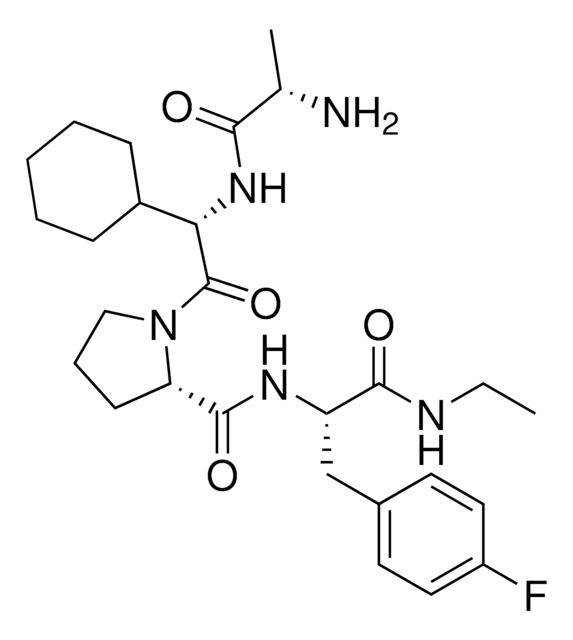
![3-(2-(tert-Butoxycarbonyl)-5-oxo-2,6-diazaspiro[3.6]decan-6-yl)benzoic acid](/deepweb/assets/sigmaaldrich/product/structures/420/426/cfe58d4f-a57d-4267-bc9b-4de0e2487e05/640/cfe58d4f-a57d-4267-bc9b-4de0e2487e05.png)

